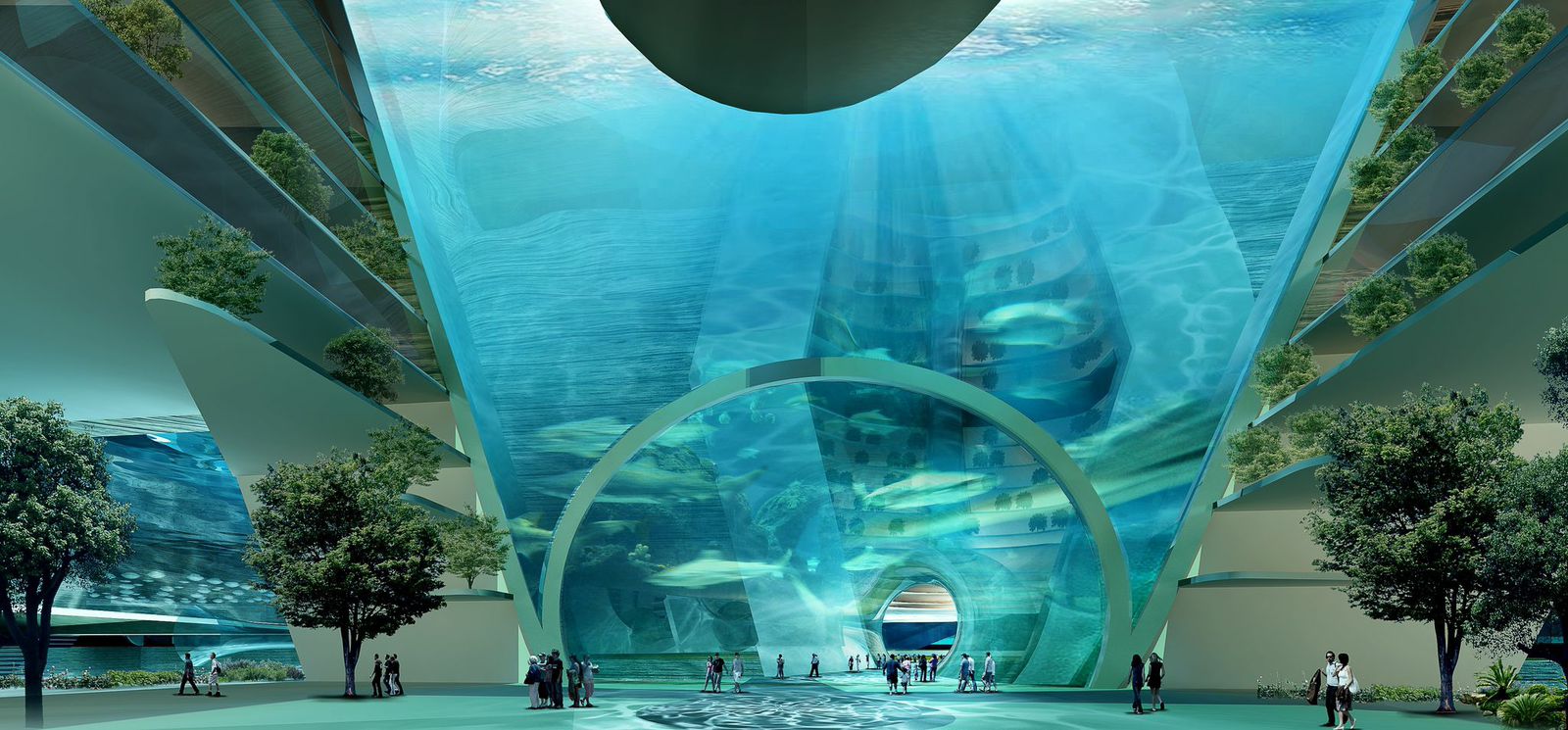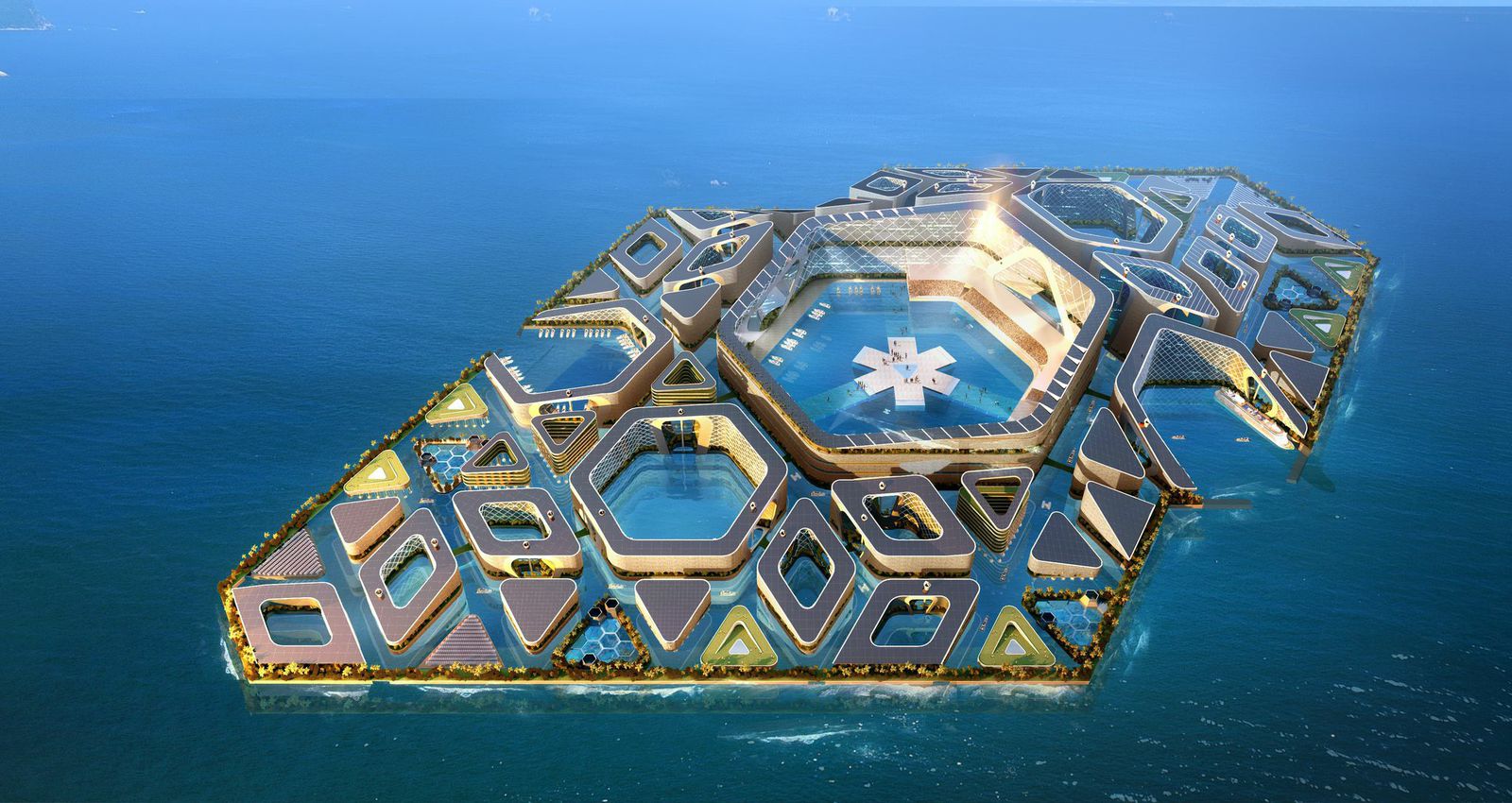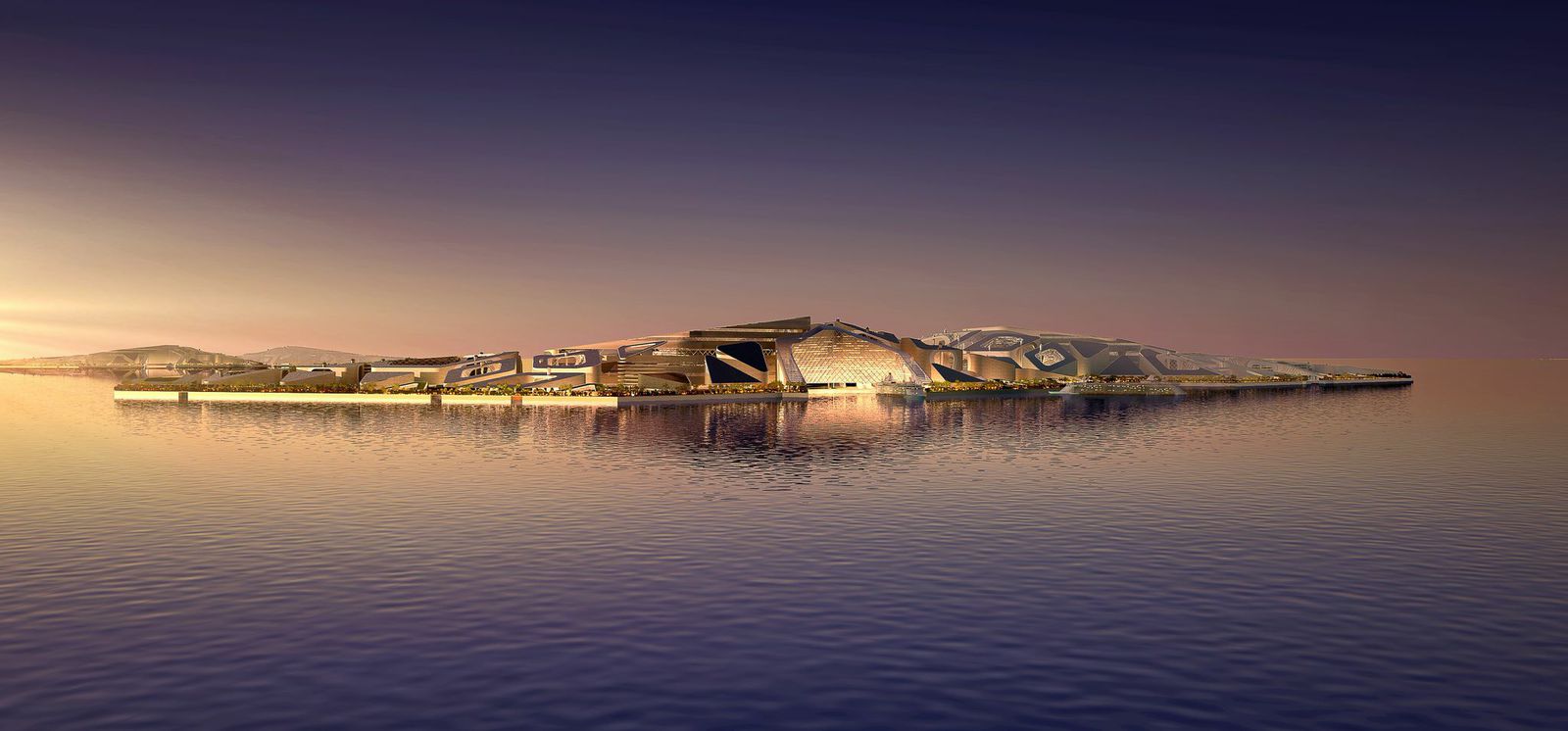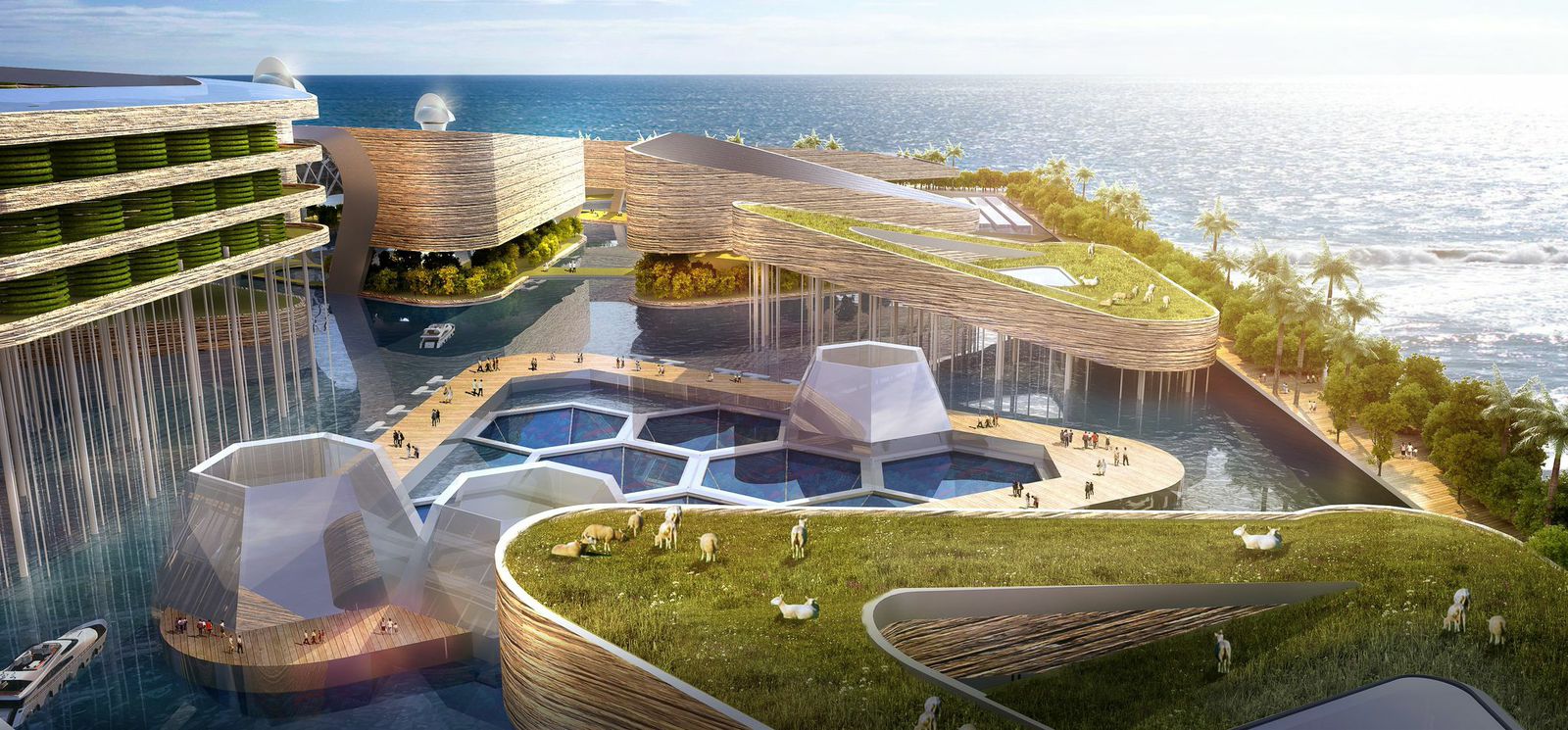As China faces large urban populations and the need for new living solutions, a new idea has been floated—literally. AT Design Office has proposed a design for a floating city, which was commissioned by the China Communications Construction Company.
To create the new city, a 10-square kilometer island would be made out of prefab blocks. The same type of blocks are currently being used by CCCC to build a bridge between Hong Kong and Macau. In theory, the new floating city would have all the features of a normal city.
“People won’t need to commute for jobs on land,” Anthony Phan, an architect at AT Design Office, told Fast Company. “Work, apartments, entertainment and parks are all provided in the floating island.”
Green spaces surround the island above and below the water; the two layers are connected by vertical gardens. These gardens will be a place to board submarines to get from block to block in the city, and tunnels will connect buildings with pedestrian paths and roads for electric cars.
AT's design suggests that the island's self-sufficiency will be possible due to tidal energy (which will be used for power), and farms on its edges will provide food for residents. Not only that, the island is set to have its own factory to produce hyper-local goods.
The island, in theory, will rise as the sea level rises with climate change. Some of the components are set to be tested as soon as next year.
Check out the futuristic design below. All renderings courtesy of AT Design Office.
Related Stories
| Aug 11, 2010
Great Solutions: Healthcare
11. Operating Room-Integrated MRI will Help Neurosurgeons Get it Right the First Time A major limitation of traditional brain cancer surgery is the lack of scanning capability in the operating room. Neurosurgeons do their best to visually identify and remove the cancerous tissue, but only an MRI scan will confirm if the operation was a complete success or not.
| Aug 11, 2010
Great Solutions: Collaboration
9. HOK Takes Videoconferencing to A New Level with its Advanced Collaboration Rooms To help foster collaboration among its 2,212 employees while cutting travel time, expenses, and carbon emissions traveling between its 24 office locations, HOK is fitting out its major offices with prototype videoconferencing rooms that are like no other in the U.
| Aug 11, 2010
2009 Judging Panel
A Matthew H. Johnson, PE Associate Principal Simpson Gumpertz & HegerWaltham, Mass. B K. Nam Shiu, SE, PEVP Walker Restoration Consultants Elgin, Ill. C David P. Callan, PE, CEM, LEED APSVPEnvironmental Systems DesignChicago D Ken Osmun, PA, DBIA, LEED AP Group President, ConstructionWight & Company Darien, Ill.
| Aug 11, 2010
Inspiring Offices: Office Design That Drives Creativity
Office design has always been linked to productivity—how many workers can be reasonably squeezed into a given space—but why isn’t it more frequently linked to creativity? “In general, I don’t think enough people link the design of space to business outcome,” says Janice Linster, partner with the Minneapolis design firm Studio Hive.
| Aug 11, 2010
BIM school, green school: California's newest high-performance school
Nestled deep in the Napa Valley, the city of American Canyon is one of a number of new communities in Northern California that have experienced tremendous growth in the last five years. Located 42 miles northeast of San Francisco, American Canyon had a population of just over 9,000 in 2000; by 2008, that figure stood at 15,276, with 28% of the population under age 18.












